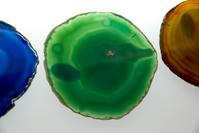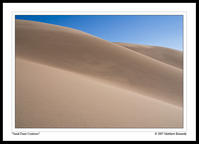
Sony Digital SLR Cameras and Lenses
a photo.net guide by Hannah Thiem

The Sony system of digital single-lens reflex (SLR) bodies and lenses, built on the bones of the discontinued Konica/Minolta SLR system, is ideal for photographers with a cabinet full of Minolta-mount autofocus lenses.
All Sony digital bodies are "small sensor" bodies and incorporate sensor-based image stabilization. Thus handheld photos taken with any compatible lens, including Minolta film-era lenses, will benefit from reduced camera shake.
If you are new to photography, start with the photo.net article "Building a Digital SLR System." The article's principles can be applied to the Sony system of cameras and lenses.
Contents
- Sony DSLR Bodies
- Nomenclature

- History
- Normal Lenses
- Wide-to-Telephoto Zoom Lenses
- Wide-angle Zoom lenses
- Telephoto Zoom Lenses
- Wide-angle Prime Lenses
- Telephoto Prime Lenses
- Macro Lenses
- Teleconverters
- Flashes
- Accessories
- Starter Sony DSLR Systems
- More
- Discontinued Cameras and Lenses
Sony DSLR Bodies
Hannah Thiem
The Sony Alpha series is compatible with the numerous Minolta Maxxum A-mount lenses dating back to 1985 (96 lenses and 6 teleconverters). In addition, there are new Sony lenses, three of which have Carl Zeiss optical designs.
The digital SLR bodies incorporate an"APS-C" sized sensor. The sensor size is 23.5x15.7mm, smaller than the standard 35mm film frame (36x24mm) and larger than a point and shoot sensor (ranging from 4.5x3.4mm to 8.8x6.6mm). The small or "crop" sensor on the Sony DSLR bodies means that lenses don't function the way they do on a film camera. Multiply focal lengths by 1.5x to calculate the "35mm equivalent". A 35mm lens on small sensor, for example, gives you the same field of view as a 52mm lens on a full frame camera. A 50mm lens that would be "normal" for a film camera, will function as a good portrait lens on a Sony digital body. A small sensor is good for telephoto work, such as wildlife photography, where a 300mm lens that is too short for bird photography on a film camera becomes a 450mm (effective) lens. However, a small sensor makes the production of high quality wide-angle images difficult. The widest lens in the Sony system, the 20/2.8 rectilinear prime, becomes a 30mm (effective) lens.
- Sony Alpha A100, $500 (review), 10 MP, released June 2006, Sony's first DSLR in their Alpha series, the A100 is 545g, only slightly heavier than the Canon Rebel XTi (510g). The A100 has built-in image stabilization, a CCD sensor, 9-area autofocus, continuous drive speed of 3 fps, 2.5-inch LCD screen, and a built-in flash.
- Sony Alpha A200, 18-70mm kit, $499 (review), 10 MP, features in-body stabilization, a CCD sensor, 9-area autofocus, continuous drive speed of 3 fps, 2.7-inch LCD screen, eye-start autofocus, built-in flash, and ISO range up to 3200.
- Sony Alpha A300, 18-70mm kit (review), 10 MP
- Sony Alpha A350 (review), 10 MP
- Sony Alpha A700, $999 (review), 12 MP, features in-body stabilization, a CMOS sensor, 11-area autofocus, continuous drive speed of 5 fps, 3-inch LCD screen, eye-start autofocus, built-in flash, and ISO of up to 6400.
- Sony Alpha A900, $2699 (review), 24 MP, Sony's first full-frame sensor camera, continuous drive speed of 5 fps.
Nomenclature
Brett Deacon
"MD" are old Minolta manual focus lenses; they don't work on the modern Sony bodies.
"ED" is extra-low dispersion glass, a more expensive and higher-quality glass that reduces chromatic aberration or "color fringing".
"IF" is internal focus, meaning that the lens does not change physical length as you focus on subjects that are closer or farther away.
"SSM" is supersonic wave motor, a piezoelectric motor that contributes to smooth and silent AF operation, similar to USM (ultrasonic motor) on Canon or AF-S (silent wave motor) on Nikon lenses.
"ADI" is advanced distance integration flash metering, available when used with the built-in flash on the A100 or the Sony TTL flashes. It provides more advanced metering than conventional TTL (through-the-lens) flash metering, and the metering is relatively unaffected by the reflectance of subjects or backgrounds.
"DT" are Sony lenses that produce an image circle sized to cover APS-C size image sensors. An advantage of a DT lens is that you aren't carrying more weight than necessary. A disadvantage is that these lenses will not work on a film camera or on any future full-frame sensor digital camera that Sony may produce.
"G" lenses are Sony's expensive large-aperture lenses designed for professional photographers. They feature ED glass, which minimizes chromatic aberration, and quiet, responsive focusing due to SSM and internal focusing.
"T*" refers to an anti-reflective optical coating developed by Carl Zeiss in the 1970s, which increases light transmission and reduces intra-lens reflections, thereby increasing contrast. All digital SLR lenses from all manufacturers include a similar coating. (See Wikipedia entry on anti-reflective coating for how this works.)
History
In 2005, Sony and Konica Minolta agreed to co-develop DSLR cameras, combining features such as Sony's CCD and CMOS sensors and Lithium batteries and Konica Minolta's AF, metering and anti-shake system. In 2006, Konica Minolta withdrew from the consumer imaging business and transferred their lens mount and other technology to Sony. Sony has been slowly adding bodies and lenses to the Alpha system, which currently comprises the A100 and the A700 DSLR camera bodies, a handful of Sony lenses, and a small assortment of accessories. The overall system is much smaller than Canon's or Nikon's.
If you aren't confused enough by the combined brand names of Sony, Konica, Minolta, you'll be pleased to learn that Sony has collaborated with Carl Zeiss on the design on some of its lenses and has decided to brand these with names such as "Sony Carl Zeiss Sonnar T*".
Normal Lenses
Matt Kennedy
A normal lens is light in weight and approximates the perspective of the human eye. Normal lenses generally have large maximum 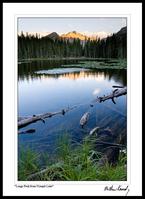 apertures, indicated by small f-numbers such as f/1.4 or f/1.8, and therefore gather much more light than zoom lenses. It may be possible to take a photo with a normal lens in light only 1/8th or 1/16th as bright as would be required for the same photo with a consumer-priced zoom lens. Also, the viewfinder will be brighter and therefore easier to use in dim light, due to the fact that the large maximum aperture stays open for viewing and stops down to whatever aperture you have set just before taking the picture.
apertures, indicated by small f-numbers such as f/1.4 or f/1.8, and therefore gather much more light than zoom lenses. It may be possible to take a photo with a normal lens in light only 1/8th or 1/16th as bright as would be required for the same photo with a consumer-priced zoom lens. Also, the viewfinder will be brighter and therefore easier to use in dim light, due to the fact that the large maximum aperture stays open for viewing and stops down to whatever aperture you have set just before taking the picture.
- Sigma 30mm f/1.4 EX DC for Sony and Minolta, $489, (effective 45mm on a small sensor), 430g, ideal for low-light photography without a flash, has a hypersonic motor for quiet, high-speed auto focus.
- Sony 28mm f/2.8, $269, (effective 42mm), 185g, similar to the Sigma 30mm lens, but an f-stop slower.
- Sony 35mm f/1.4G, $1369 (review), (effective 52.5mm), 615g, this lens is part of Sony's "G" professional series and produces an image circle large enough to cover the full 35mm film frame (24x36mm). This lens would become a sensible purchase if Sony were to introduce a body with a full-frame sensor.
Wide-to-Telephoto Zoom Lenses
A wide-to-tele zoom is what you get as a standard "kit" lens with a cheaper digital SLR body. The range goes from moderately wide to moderately telephoto. An all-purpose lens is good for when you are too busy to change lenses, or for traveling when less weight and less baggage is better. The wide end will capture a table of guests, the long end is good for portraiture. Although covering wide ranges, which allows them to be used in many photographic situations, the main weakness of these lenses is that the cheaper ones have a very small maximum aperture, e.g., f/4 or f/5.6, and can only be used in bright light, on a tripod, or with an on-camera flash.
- Sony 16-80mm f/3.5-4.5 DT Carl Zeiss, $749 (review), (effective 24-120mm), a high quality DT lens for small sensor DSLRs; the slow aperture means that this lens requires twice as much light as Canon and Nikon's standard high-quality wide-to-tele zooms.
- Sony 18-70mm f/3.5-5.6 DT, $199 (review), (effective 27-105mm), DT lens for small sensor DSLRs, included as an option with the Sony Alpha A100K, 18-70mm kit (review), this basic kit lens works well enough outdoors on bright sunny days.
- Sony 18-200mm f/3.5-6.3 DT, $529, (effective 27-300mm), DT lens for small sensor DSLRs, another kit lens option with the Sony Alpha A100H, 18-200mm kit (review). Potentially useful for travel.
Wide-angle Zoom Lenses
- Sony 11-18mm f/4.5-5.6 DT, $699, (effective 16.5-27mm), DT lens for small sensor DSLRs, the widest-angle zoom in the Sony line of lenses. This lens is a bit slow, but dramatically wide.
- Sigma 10-20mm f/4-5.6 for Sony, $479, (effective 15-30mm), has a hypersonic motor for quiet, high-speed autofocusing; also somewhat slow for use indoors.
Telephoto Zoom Lenses
- Sony 24-105mm f/3.5-4.5, (effective 36-157.5mm), lightweight and compact, but not dramatically wide on a small sensor body. Slow maximum aperture limits indoor use.
- Sony 70-200mm f/2.8, $1799, (effective 105-300mm), a professional G-series lens, good for portraits and travel photography, stretchable with a Sony 1.4x Teleconverter or a Sony 2.0x Teleconverter. The fast f/2.8 aperture allows use in available light and also provides the option of isolating a subject against a blurred background.
- Sony 75-300mm f/4.5-5.6, $249, (effective 112.5-450mm), cheap, slow zoom lens.
Brett Deacon
Wide-angle Prime Lenses
- Sony 16mm f/2.8 Fisheye, $849, would produce images with a 180-degree 1970s fisheye distorted look on a film camera; on a small sensor digital body turns into the 110-degree view of a 24mm lens. The lens includes 4 internal filters to select from with a rotating dial.
- Sony 20mm f/2.8, $599, (effective 30mm), on a small sensor, this lens offers a not very wide perspective similar to the wide end of a point and shoot camera.
Telephoto Prime Lenses
A telephoto prime lens offers excellent image quality at long focal lengths, with a large maximum aperture and high magnification of the subject. When comparing a telephoto prime to a normal-to-telephoto zoom, note the small maximum aperture on the long end of the zoom. Keep in mind that on a small sensor, the effective focal length of a telephoto prime is multiplied by 1.5.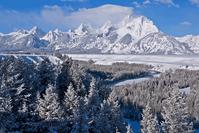
- Sony 50mm f/1.4, $369, (effective 75mm), good for available-light portraiture and for throwing a distracting background out of focus.
- Sony 85mm f1.4 Carl Zeiss, $1369, (effective 127.5mm), a great lens for portrait photography. The large maximum aperture allows for a very shallow depth of field and for use in low light.
- Sony 135mm f/1.8 Carl Zeiss, $1479, (effective 202.5mm), a fast medium telephoto lens with 3 ED glass elements to compensate for chromatic aberration; this is a good lens for photographing indoor sports since the f/1.8 aperture allows for motion-stopping shutter speeds.
- Sony 135mm f/2.8, $1200 (review), (effective 202.5mm), an STF or smooth transfocus lens, which collects less light at the edges to create gradual transitions between in-focus and defocused areas. This lens is stretchable with a Sony 1.4x Teleconverter or a Sony 2.0x Teleconverter.
- Sony 300mm f/2.8, $6299, (effective 450mm), Sony's G pro-series lens, an expensive piece of glass, but well-worth it for sports and wildlife photography, stretchable with a Sony 1.4x Teleconverter or a Sony 2.0x Teleconverter.
- Sony 500mm f/8, $749, (effective 750mm), light, compact, and inexpensive due to its mirror design. Sadly, most people don't like the way that mirror lenses turn out-of-focus highlights turn into bright donuts. The fixed f/8 aperture is too fast to give much depth of field and too slow to allow use without a tripod. A specialized lens.
Macro Lenses
Matt Kennedy
Macro lenses let you photograph physically small objects, filling more of the frame with the object. The longer the focal length of the macro lens, the more space you can put between you and your subject. This is especially important when photographing insects. A 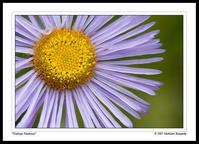 macro lens that goes down to "1:1" can be used to take a frame-filling photo of something that is 23.5x15.7mm in size, the same dimensions as the sensor on a small sensor digital body. Most macro lenses can be used for ordinary photographic projects as well, i.e., they will focus out to infinity if desired.
macro lens that goes down to "1:1" can be used to take a frame-filling photo of something that is 23.5x15.7mm in size, the same dimensions as the sensor on a small sensor digital body. Most macro lenses can be used for ordinary photographic projects as well, i.e., they will focus out to infinity if desired.
- Sony 50mm f/2.8 Macro, $479, (effective 75mm), focuses to 1:1.
- Sony 100mm f/2.8 Macro, $679, (effective 150mm), focuses down to 1:1, may also be used as a telephoto prime.
Teleconverter
A teleconverter provides additional magnification, but the overall amount of light gathered by the lens remains the same. Thus, you lose one f-stop of light with the 1.4x converter and two f-stops with the 2x converter. The viewfinder will be dimmer and the camera will have a tougher time autofocusing. To get autofocus with a 1.4x teleconverter, you need a lens f/4 or faster. To get autofocus with a 2x, you need a lens f/2.8 or faster. The final aperture after the teleconverter has been added needs to be f/5.6 or faster. With a minimal investment, you can convert any of the following lenses: Sony 70-200mm f/2.8, Sony 300mm f/2.8, or the Sony 135mm f/2.8 (review), handy for minimizing gear for landscape or sports photography.
- Sony 1.4x Teleconverter, $479
- Sony 2.0x Teleconverter, $479
Flashes
An in-body pop-up flash can be useful outdoors for filling in harsh shadows. When flash is providing the primary light, you'll need at least one hotshoe TTL flash. A hotshoe flash can be used to bounce light off the ceiling or walls or held at an angle from the lens with the aid of a Sony off-camera cord. Unless you want images that look as though the photographer was wearing a headlamp, try to come up with something other than direct on-camera flash.
- Sony HVL-F56AM Flash, $329, the Sony F56AM auto flash unit features a large guide number of 56 (at ISO 100/m) and can be tilted or swiveled for bounce flash or close-up photography. This flash performs ADI flash metering, a TTL flash metering method that works with the built-in distance encoder of the lens.
- Sony HVL-F36AM Flash, the Sony F36AM auto flash unit has similar features as the Sony F56AM with slightly less power output (guide number of 36 at ISO 100/m).
Accessories
Matt Kennedy
For a camera body and one lens, keep the camera around your neck and ready to use. To hold a camera system, start by reading the photo.net article on camera bags.
Starter Sony DSLR Systems
Family portraits:
- Sony Alpha A100, $500 (review)
- Sigma 30mm f/1.4 EX DC for Sony and Minolta, $489
- Sony 85mm f1.4 Carl Zeiss, $1369
- 2 GB CF card
Family vacation:
- Sony Alpha A100, $500 (review)
- Sony 11-18mm f/4.5-5.6 DT, $699
- Sony 16-80mm f/3.5-4.5 DT Carl Zeiss, $749 (review)
- 16 GB CF card (good for the whole trip)
Serious photographer:
Hannah Thiem
- Sony Alpha A700, $999 (review)
- Sony 11-18mm f/4.5-5.6 DT, $699
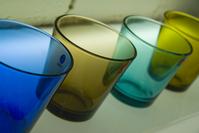
- Sigma 30mm f/1.4 EX DC for Sony and Minolta, $489
- Sony 50mm f/1.4, $369
- Sony 70-200mm f/2.8, $1799
- Sony HVL-F56AM Flash, $329
- 16 GB CF card
More
- Sony photo.net discussion forum
- Lens chapter from the photo.net guide to Making Photographs
- Sony Digital SLR web site
- Sony lens compatibility chartDiscontinued Cameras and Lenses
